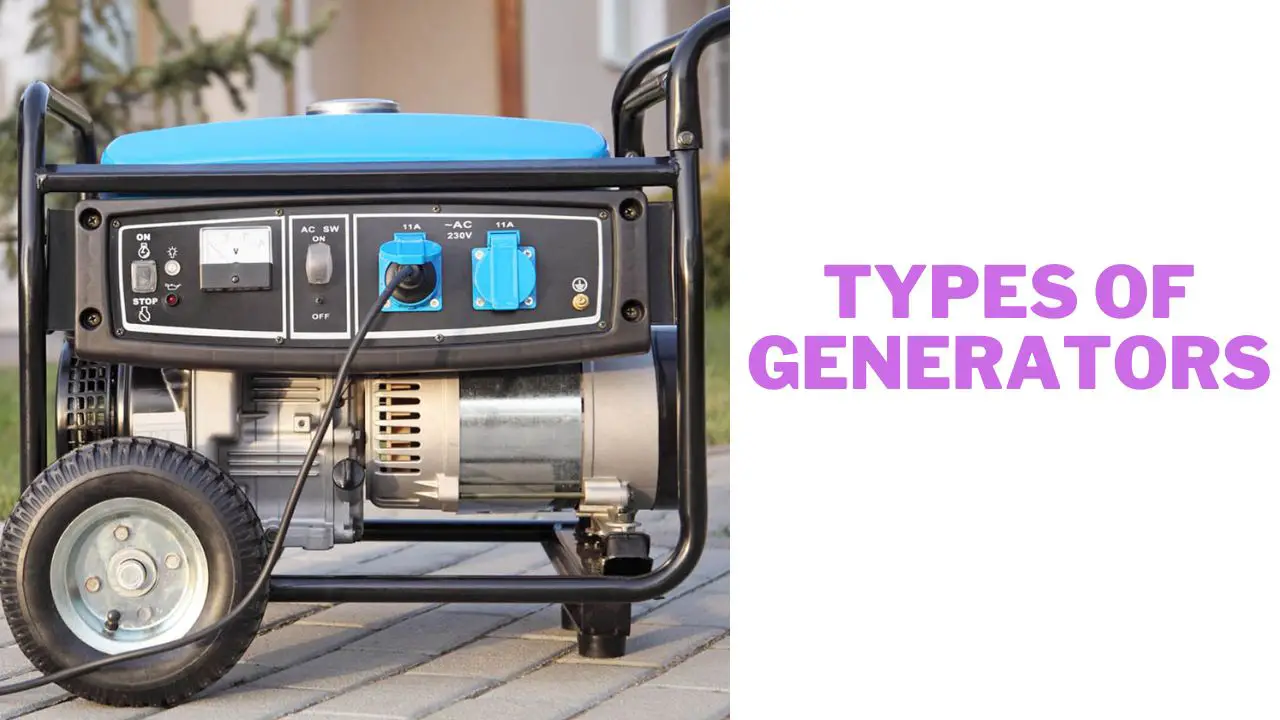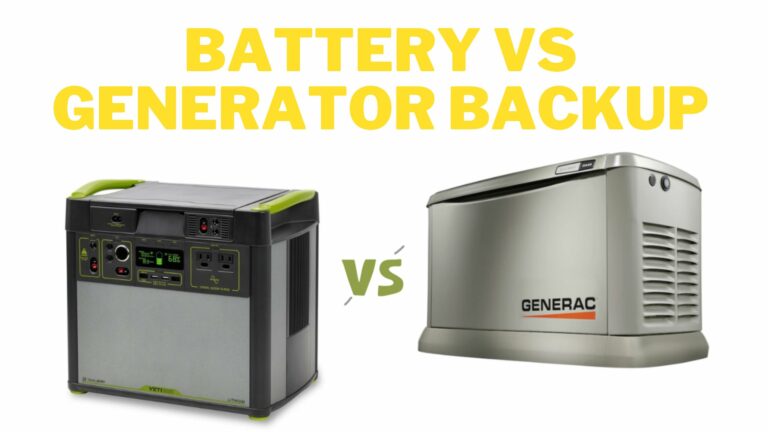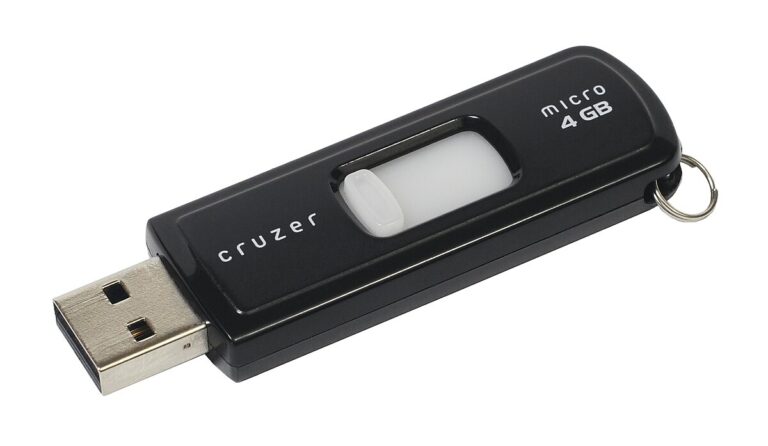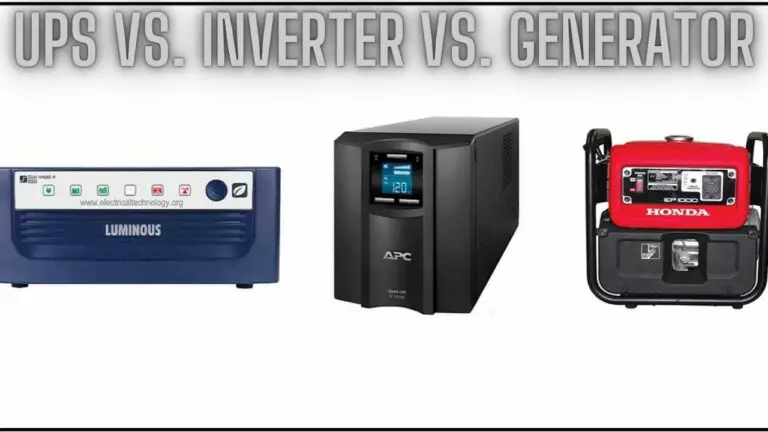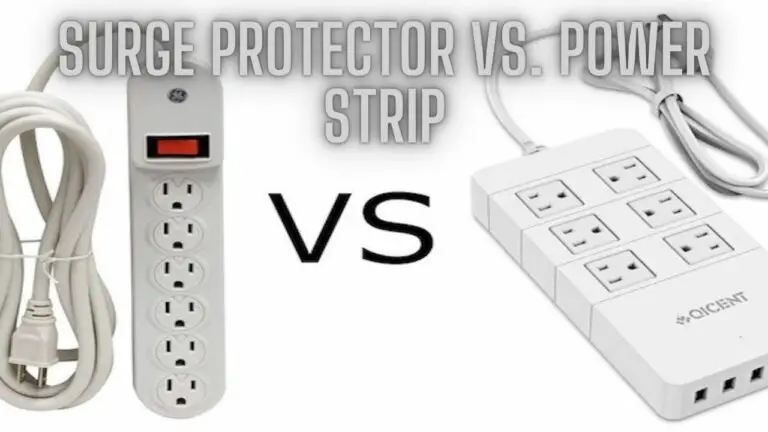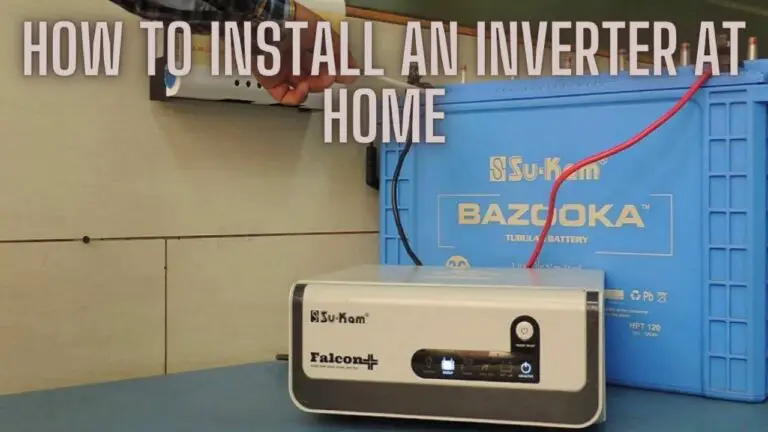Different Types of Generators and Their Applications
Introduction
Generators play a crucial role in providing power during emergencies, in remote areas without access to the electrical grid, and as backup sources for critical infrastructure. Understanding the different types of generators and their applications is essential for selecting the most suitable option for specific needs. This guide provides an overview of various types of generators, ranging from conventional to renewable energy-based systems, along with their working principles and common applications. Whether you’re looking for a portable solution for outdoor activities or a reliable standby generator for home or industrial use, this guide will help you make informed decisions regarding generator selection and deployment.
Conventional Generators
Conventional generators, also known as standard or traditional generators, are among the most common types of generators used for power generation. They operate on the principle of electromagnetic induction and are fueled by various sources such as gasoline, diesel, or natural gas. Here’s an overview of conventional generators:
- Description: Conventional generators consist of an engine, which is usually an internal combustion engine, connected to an alternator. The engine burns fuel to produce mechanical energy, which drives the alternator to generate electricity.
- Working Principle: The engine converts the chemical energy stored in the fuel into mechanical energy through combustion. This mechanical energy is then transferred to the alternator, where it induces an electrical current in coils of wire through electromagnetic induction. This current is then converted into usable electricity.
- Applications: Conventional generators are widely used in various settings, including residential, commercial, and industrial applications. They are commonly employed as backup power sources during power outages, for powering tools and equipment at construction sites, and in remote areas where access to the electrical grid is limited.
Conventional generators come in a range of sizes and power outputs to suit different requirements, from small portable units for camping and recreational use to large stationary units for powering entire buildings or facilities. Despite advancements in generator technology, conventional generators remain a popular choice due to their reliability, versatility, and relatively low cost of acquisition and operation.
Inverter Generators
Inverter generators represent a modern and efficient alternative to conventional generators. They utilize advanced electronic circuitry to produce clean and stable electrical power. Here’s an overview of inverter generators:
- Description: Inverter generators incorporate three main components: a generator, an inverter, and an engine. The generator produces high-frequency AC power, which is then converted to DC power by the inverter. The DC power is then inverted back to AC power of the desired voltage and frequency, resulting in clean and stable electricity suitable for sensitive electronics.
- Working Principle: The engine, typically a four-stroke internal combustion engine, drives the generator to produce AC power. This AC power is then converted to DC power by electronic components such as rectifiers and capacitors. The DC power is then inverted back to AC power using sophisticated electronic circuitry, ensuring that the output voltage and frequency remain consistent and free from fluctuations.
- Applications: Inverter generators are ideal for powering sensitive electronic devices such as laptops, smartphones, and televisions, as well as for use in recreational activities such as camping, boating, and RVing. They are also commonly used in residential settings as backup power sources during outages, as well as in construction and outdoor events where quiet operation and clean power are essential.
Inverter generators offer several advantages over conventional generators, including quieter operation, improved fuel efficiency, and reduced emissions. They are also more compact and lightweight, making them easier to transport and store. While inverter generators tend to be more expensive upfront compared to conventional generators, their superior performance and efficiency make them a popular choice for a wide range of applications.
Portable Generators
Portable generators are versatile power sources designed for easy transportation and temporary use in various settings. They provide on-the-go electricity for outdoor activities, emergencies, and job sites. Here’s an overview of portable generators:
- Description: Portable generators typically consist of an engine, an alternator, and various control and safety features housed in a compact and durable casing. They are available in a wide range of sizes and power outputs to accommodate different needs, from small camping generators to larger units capable of powering household appliances.
- Working Principle: Portable generators operate on the same basic principle as conventional generators, utilizing an internal combustion engine to drive an alternator that generates electricity. They are fueled by gasoline, diesel, propane, or natural gas, depending on the model. Portable generators may feature recoil or electric start mechanisms for easy operation.
- Applications: Portable generators are highly versatile and can be used in numerous applications, including:
- Camping and outdoor recreational activities to power lights, appliances, and electronic devices.
- Emergency backup power during power outages to keep essential appliances running, such as refrigerators, heaters, and medical equipment.
- Construction sites and remote job locations where access to electrical power may be limited.
- Events and outdoor gatherings to provide electricity for lighting, sound systems, and food preparation equipment.
Portable generators offer convenience, flexibility, and peace of mind in various situations where access to grid power is unavailable or unreliable. However, it’s essential to operate them safely and follow proper maintenance procedures to ensure optimal performance and longevity. Additionally, users should be aware of potential hazards such as carbon monoxide emissions and electrical shocks and take appropriate precautions when using portable generators.
Standby Generators
Standby generators are stationary power backup systems that automatically activate during power outages to provide uninterrupted electricity to homes, businesses, and critical infrastructure. Here’s an overview of standby generators:
- Description: Standby generators are permanently installed outside a building or facility and are connected directly to the electrical system through a transfer switch. They are available in various sizes and capacities to meet different power requirements, ranging from small residential units to large commercial or industrial systems.
- Working Principle: Standby generators are equipped with an internal combustion engine, typically fueled by natural gas, propane, or diesel. They are designed to automatically detect power outages and start within seconds to restore electricity. The transfer switch disconnects the building from the main power grid and connects it to the standby generator, ensuring seamless transition and uninterrupted power supply.
- Applications: Standby generators are commonly used in residential, commercial, and industrial settings for backup power during emergencies. Key applications include:
- Residential homes to maintain essential functions such as lighting, heating, refrigeration, and security systems during power outages.
- Commercial buildings such as hospitals, data centers, and manufacturing facilities to prevent disruptions to operations and protect sensitive equipment.
- Critical infrastructure such as water treatment plants, telecommunications facilities, and emergency response centers to ensure continuous operation and public safety.
Standby generators offer several advantages over portable generators, including automatic operation, higher power capacity, and permanent installation. They provide reliable backup power without the need for manual intervention, making them ideal for situations where uninterrupted electricity is critical. However, standby generators require professional installation and regular maintenance to ensure proper functioning and compliance with safety regulations.
Industrial Generators
Industrial generators are robust power generation systems designed to meet the high-demand requirements of industrial applications, including manufacturing, mining, construction, and oil and gas operations. Here’s an overview of industrial generators:
- Description: Industrial generators are heavy-duty power generation units built to withstand rugged environments and continuous operation. They are available in a wide range of sizes, configurations, and power outputs to accommodate various industrial needs, from small backup systems to large prime power generators.
- Working Principle: Industrial generators operate on the same basic principle as conventional generators, utilizing an internal combustion engine to drive an alternator that generates electricity. However, industrial generators are often equipped with larger engines, advanced control systems, and enhanced cooling and exhaust systems to withstand heavy loads and prolonged operation.
- Applications: Industrial generators play a critical role in ensuring uninterrupted power supply for industrial operations. Key applications include:
- Prime Power: Providing primary electrical power in remote or off-grid locations where access to the electrical grid is limited or unavailable.
- Backup Power: Serving as standby power sources to maintain essential operations during power outages or emergencies, minimizing downtime and production losses.
- Peak Shaving: Supplementing power from the grid during periods of high demand to reduce utility costs and alleviate strain on the electrical infrastructure.
- Portable Power: Supporting temporary or mobile operations such as construction sites, oil rigs, and disaster relief efforts with reliable electricity.
Industrial generators are designed for durability, reliability, and high-performance operation in demanding industrial environments. They are built to comply with industry standards and regulations, ensuring safe and efficient operation. Additionally, industrial generators are often equipped with advanced features such as remote monitoring and control capabilities, automatic start/stop functions, and integrated fuel management systems for enhanced reliability and ease of use. Regular maintenance and servicing are essential to ensure optimal performance and longevity of industrial generators.
Hybrid Generators
Hybrid generators combine multiple power generation technologies to offer increased efficiency, reduced fuel consumption, and lower emissions compared to traditional generators. Here’s an overview of hybrid generators:
- Description: Hybrid generators integrate two or more power sources, such as diesel engines, renewable energy sources (e.g., solar, wind), battery storage systems, and/or fuel cells, to provide a reliable and sustainable power solution. They are designed to maximize energy efficiency and minimize environmental impact by leveraging the strengths of each power generation technology.
- Working Principle: Hybrid generators utilize a combination of power sources to generate electricity based on demand and availability. For example, during periods of high demand or when renewable energy sources are unavailable, the diesel engine or fuel cell provides primary power. During periods of low demand or when renewable energy sources are abundant, the generator may switch to renewable energy sources or use excess energy to charge batteries for later use.
- Applications: Hybrid generators are suitable for a wide range of applications where reliable and sustainable power is required, including:
- Remote and Off-Grid Locations: Providing electricity to remote communities, off-grid facilities, and isolated sites where access to the electrical grid is limited or nonexistent.
- Telecommunications Towers: Powering cellular towers and communication infrastructure in remote or rural areas where reliable electricity is essential for network operation.
- Construction and Mining Sites: Supporting temporary power needs at construction sites, mining operations, and remote worksites where access to grid power may be impractical or costly.
- Renewable Energy Integration: Integrating renewable energy sources such as solar and wind with diesel generators to create hybrid power systems that reduce reliance on fossil fuels and greenhouse gas emissions.
Hybrid generators offer several advantages over traditional generators, including improved fuel efficiency, reduced operating costs, and lower environmental impact. By combining multiple power generation technologies, hybrid generators provide a flexible and adaptable solution for meeting diverse energy needs while promoting sustainability and energy independence. Ongoing advancements in hybrid generator technology continue to enhance performance, reliability, and affordability, making them increasingly viable alternatives to traditional power generation systems.
Renewable Energy Generators
Renewable energy generators harness naturally replenishing energy sources to produce electricity without depleting finite resources or emitting harmful pollutants. Here’s an overview of renewable energy generators, including solar, wind, and hydro generators:
- Solar Generators:
- Description: Solar generators utilize photovoltaic (PV) cells to convert sunlight directly into electricity. They consist of solar panels, inverters, and often include battery storage systems to store excess energy for use during periods of low sunlight.
- Working Principle: Photons from sunlight strike the solar panels, causing electrons in the PV cells to become excited and create an electric current. The inverters convert this direct current (DC) into alternating current (AC) suitable for powering electrical devices.
- Applications: Solar generators are used in residential, commercial, and industrial settings to generate clean and renewable electricity for homes, businesses, and utilities. They are also deployed in off-grid and remote areas to provide sustainable power where access to the electrical grid is limited.
- Wind Generators:
- Description: Wind generators, also known as wind turbines, convert the kinetic energy of wind into mechanical power, which is then converted into electricity. They consist of rotor blades, a hub, a gearbox, and a generator housed in a tower.
- Working Principle: Wind energy causes the rotor blades to spin, rotating the hub connected to a gearbox that increases the rotational speed. The generator converts the mechanical energy into electrical energy through electromagnetic induction.
- Applications: Wind generators are installed in onshore and offshore wind farms to generate electricity for grid-connected power systems. They are also used for distributed power generation in rural areas and off-grid locations with strong and consistent wind resources.
- Hydro Generators:
- Description: Hydro generators utilize the potential energy of flowing water, such as rivers, streams, or waterfalls, to generate electricity. They consist of turbines, generators, and control systems housed in hydroelectric power plants.
- Working Principle: Water flow drives the turbines, causing them to rotate and drive the connected generators. The generators convert the mechanical energy of the rotating turbines into electrical energy, which is then transmitted through power lines.
- Applications: Hydro generators are employed in large-scale hydroelectric power plants to produce electricity for municipal, industrial, and residential use. They are also used in micro-hydro systems to provide off-grid power for remote communities and agricultural operations.
Renewable energy generators offer numerous advantages, including environmental sustainability, energy independence, and long-term cost savings. By harnessing clean and renewable energy sources, they contribute to reducing greenhouse gas emissions, combating climate change, and promoting a more sustainable energy future. Continued advancements in renewable energy technology are driving down costs and increasing efficiency, making renewable energy generators increasingly competitive with conventional fossil fuel-based power generation.
Different Types of Generators and Their Applications FAQs
- What are the main types of generators?
- The main types of generators include conventional generators, inverter generators, portable generators, standby generators, industrial generators, hybrid generators, and renewable energy generators (such as solar, wind, and hydro generators).
- What is the difference between conventional and inverter generators?
- Conventional generators produce AC power directly from the engine, while inverter generators use advanced electronics to produce clean and stable AC power from DC power generated by the engine. Inverter generators are typically more fuel-efficient, quieter, and produce cleaner power suitable for sensitive electronics.
- What are portable generators used for?
- Portable generators are versatile power sources designed for temporary use in various settings, including camping, outdoor events, construction sites, and as backup power during emergencies. They provide on-the-go electricity for a wide range of applications, from powering appliances and tools to charging electronic devices.
- What is the difference between standby and portable generators?
- Standby generators are permanently installed outside a building or facility and automatically activate during power outages to provide backup power. Portable generators, on the other hand, are designed for temporary use and can be moved to different locations as needed. Standby generators offer higher power capacity and seamless automatic operation compared to portable generators.
- What are industrial generators used for?
- Industrial generators are heavy-duty power generation systems designed for industrial applications, including manufacturing, mining, construction, and oil and gas operations. They provide reliable and continuous power for critical equipment and operations, ensuring uninterrupted production and minimizing downtime.
- What are hybrid generators?
- Hybrid generators combine multiple power generation technologies, such as diesel engines, renewable energy sources, and battery storage systems, to provide a reliable and sustainable power solution. They offer increased efficiency, reduced fuel consumption, and lower emissions compared to traditional generators.
- What are renewable energy generators?
- Renewable energy generators harness naturally replenishing energy sources, such as sunlight, wind, and water, to produce clean and renewable electricity. They offer environmental sustainability, energy independence, and long-term cost savings, making them increasingly popular alternatives to fossil fuel-based power generation.
These FAQs provide an overview of the different types of generators, their features, and common applications, helping users understand the diverse range of generator options available and their respective uses.
Conclusion
In conclusion, renewable energy generators represent a promising and sustainable solution for meeting our growing energy needs while minimizing environmental impact. Solar, wind, and hydro generators harness abundant and naturally replenishing energy sources to produce clean and renewable electricity without depleting finite resources or emitting harmful pollutants.
These renewable energy technologies offer numerous advantages, including reduced greenhouse gas emissions, energy independence, and long-term cost savings. By diversifying our energy sources and transitioning towards renewable energy generation, we can mitigate the effects of climate change, reduce our reliance on fossil fuels, and build a more resilient and sustainable energy infrastructure.
While challenges such as intermittency, grid integration, and upfront costs remain, ongoing advancements in renewable energy technology, coupled with supportive policies and investments, are driving down costs and increasing efficiency. As a result, renewable energy generators are becoming increasingly competitive with conventional fossil fuel-based power generation, paving the way for a cleaner, greener, and more sustainable energy future.
By embracing renewable energy generators and transitioning towards a more sustainable energy system, we can create healthier and more resilient communities, safeguard our environment for future generations, and build a more sustainable and equitable world for all.

